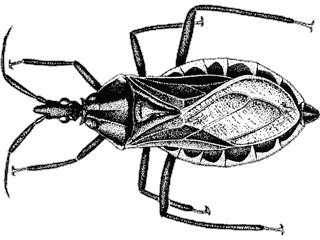 As a physician-scientist focused on infectious diseases, my research interests include the following:
As a physician-scientist focused on infectious diseases, my research interests include the following:
Kissing Bugs and Allergies: We have been working on kissing bugs for a number of years. Bites from these true bugs are the most common cause of bite-associated anaphylaxis in the United States. In addition, bites can lead to Chagas disease. We are currently working on determining the effectiveness of a skin lotion we developed in preventing kissing bug feeding. We have discovered several potential chemical inhibitors of feeding by these bugs and are now working on measuring their effectiveness. This research includes culture of kissing bugs and measurement of feeding.
ALSO SEE:
“Fellow, Faculty Member Present on UA Kissing Bugs, Chagas Disease Research” | Posted Dec. 21, 2018
“Infectious Diseases Fellow Seeks Citizen Help in Kissing Bug, Chagas Disease Study” | Posted May 27, 2018
“Battling Kissing Bugs and Chagas Disease in Bisbee with UA Help” | Posted Oct. 24, 2016
Serum amyloid P component (SAP) and fungal phagocytosis: This project is to measure the presence or absence of opsonization of Candida yeasts coated with serum amyloid P component. SAP is part of the biofilm in invasive fungal infections and at least with bacteria is an anti-opsonin. We are culturing human monocytes and interacting them with Candida yeasts to measure phagocytosis. We will coat the fungi with SAP and determine if this inhibits phagocytosis of the fungi. This research includes the use of fluorescent microscopy, cell culture, and amyloid stains.
ALSO SEE:
Medicine Grand Rounds: “Candida, the most commonly encountered fungus in medicine. Why and how it causes disease” (video) | Posted Sept. 2, 2015
Frailty in HIV: Human immunodeficiency virus (HIV) patients are recruited into a study looking at their performance in a virtual exercise and the relationship to depression. We measure frailty using the Fried criteria and those with depression as determined on a standard questionnaire are asked to participate in a twice a week, six-week long exercise protocol using virtual exercise. We are attempting to ameliorate depression in HIV patients with computer-driven, virtual reality exercise games of our devising. This research measures frailty as well as virtual exercise performance.
ALSO SEE:
“Latest Anti-retroviral Drug Regimens Provide `Lazarus Effect’ for HIV Patients Suffering from Frailty” | Posted Feb. 27, 2019


